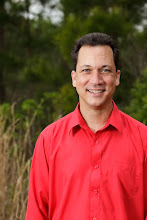Even though peers are present in 88% of bullying scenarios, according to a 2001 study headed by D. Lynn Hawkins of York University, much bullying goes unreported and bullying still goes on. Why?
Even though there are many peers who might be able to help stop a bullying incident—and even though the Hawkins study found that, over half of the time, peers are able to stop a bullying episode within 10 seconds—peers often to not try to intervene. In fact, the work of Cristina Salmivalli and her colleagues has determined that many children assist, cheer on, or ignore the bullying. This is what makes bullying a public secret.
The tragedy of bullying being a public secret is that the victim feels alone and isolated, while at the same time experiencing a very public humiliation. In fact, the victim can easily get the idea that the entire school, community, or world is participating in their victimization.
This understandable belief by victims of bullying, that an entire community is against them, leads to a sense of powerlessness, hatred (of self or others), and isolation. That is why it is often useless to tell the victim, “Just fight back,” or “Man-up.” A logical response from the victim’s perspective would be “No one is manly enough to fight back against everyone!”
However, Salmivalli and others have found that about 16-28% of children will intervene in bullying in one way or another. What does this mean? That the picture is far from hopeless. So as understandable as a victim’s feelings of hopelessness are, they don’t exactly match reality.
But how will a victim know that there is help out there among his or her peers if he or she has never been helped? That’s where its up to us (“us” meaning me and anyone else who reads this blog posting). Our job is to educate victims that help is out there by simply telling them until they believe it. We also need to show them that help is out there by intervening until the problem is solved.
In addition, we need to take make full use of those 16-28% of kids who can become allies to our so-called victims. Finally, remember those kids who ignore bullying, who jump in and help the bully, or who reinforce the bullying by cheering it on? We need to identify those children and convert them into allies of the victims. Then the victims will no longer be victims, and the bullies will no longer be bullies. School, work, and other social places will become a place to work together.
Subscribe to:
Post Comments (Atom)




Yep, your, as usual well-written blog again supports the proposition/adage "we're only as sick as our secrets." Thanks for contributing to the three qualities Murray Bowen identified as characteristics of good/better relationships: first "openness," and then also "equality" and, somewhat ironically perhaps, "separateness," in our relationships, Jim.
ReplyDelete